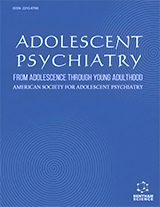Abstract
Oxidative stress, such as the generation of reactive oxygen species (ROS), plays a causative role in the development of hepatic fibrosis. Hepatic fibrosis is a complex dynamic process which is mediated by death of liver cells (hepatocytes) and activation of hepatic stellate cells (HSCs). Multivariate analysis with patients with chronic hepatics C showed that the male sex was associated with advanced fibrosis, which was independent of age at the time of a hepatitis C virus (HCV) infection and of alcohol consumption, and that the progression of hepatic fibrosis began to accelerate at 50 years of age, irrespective of the duration of the virus infection. Judging from these data together with the average menopausal age of 50 years, among premenopausal females without either factors of a male sex or an older age, the transition of hepatic fibrosis to the end-stage cirrhosis appears to require a longer time. The principal estrogen secreted by the ovary and the most potent naturally occurring estrogen is estradiol, which is a potent endogenous antioxidant. Estradiol inhibits ROS generation, antioxidant enzyme loss, and hepatocyte death, and it is also able to attenuate oxidative stress-induced transforming growth factor-β (TGF-β) expression and HSC activation, enhancing antifibrotic activity. Whereas another female sex steroid, progesterone acts in opposition to the favorable effects of estradiol. The stimulatory effect of progesterone on TGF-β expression and HSC activation is blocked by estradiol. These findings suggest that estradiol and progesterone affect coordinately processes related to the slow progression of hepatic fibrosis in females.
Keywords: Hepatic fibrosis, oxidative stress, ROS, hepatic stellate cell, estrogen, estradiol, progesterone, antioxidant, TGF-β, menopause, NADH/NADPH oxidases, lipid peroxidation, collagen, estrogen receptor, apoptosis






















